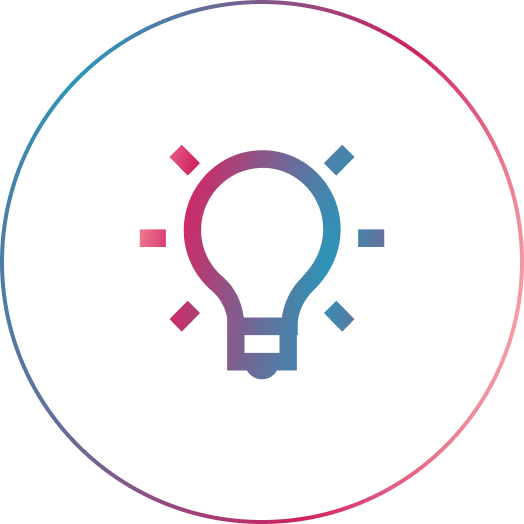In a modern B2B sales cycle, buyers don’t follow a straight line. They loop, they stall, they switch tabs, and they rarely make decisions alone. That’s why customer journey mapping (CJM) has evolved from a nice-to-have tool into a foundational part of modern B2B marketing strategy. Done right, it aligns teams, sharpens messaging, and accelerates pipeline velocity. It also provides a strategic roadmap for digital marketing agencies and SEO teams to deliver content that lands with precision and drives results.
At its core, journey mapping is about understanding how real people make complex decisions, and then building content and campaigns that guide them confidently forward. The modern B2B buyer journey is now an infinite loop, and mapping it is how you stay relevant, visible, and competitive.
Why B2B Customer Journeys Are Uniquely Complex
Unlike B2C purchases, which often involve one person making an emotionally driven choice, B2B decisions are rational, committee-based, and high-stakes. A typical B2B buying group includes 6 to 10 stakeholders, each with different roles, goals, and levels of influence. A CFO cares about ROI, a CTO wants clean integration, and an end user just needs the product to make their job easier.
That diversity makes targeting more complicated. It also stretches the sales cycle and creates more digital touchpoints, from SEO to email to demo requests, that need to work in sync. In this context, customer journey mapping becomes essential not only to align marketing and sales, but to ensure that each piece of content speaks directly to a real person with specific needs.
Mapping this journey means:
- Accounting for different personas and their needs at each stage
- Understanding which content aligns with awareness, consideration, and decision
- Designing follow-ups that nurture each role without creating friction
Digital marketing teams that use customer journey maps can personalize outreach, prioritize the right SEO keywords, and create content that speeds up decision-making across the buying group.
How Journey Mapping Improves SEO and Digital Strategy
Customer journey maps aren’t just strategy docs for sales. They’re powerful SEO tools. The best B2B SEO today starts with intent, not keywords. Intent mapping—a close cousin of CJM—uses real buyer questions and pain points to guide content strategy. Combined with journey maps, it ensures that every piece of content serves a purpose and that no opportunity for relevance is missed.
Let’s say you’re marketing a financial software product. Your awareness-stage buyer might search “how to simplify multi-entity accounting,” while a decision-stage stakeholder might search “NetSuite vs. Sage Intacct for enterprise compliance.” Mapping those search intents to the customer journey ensures your SEO content shows up with relevance, authority, and timing.
Key Benefits of Mapping for SEO:
- Targets high-intent, long-tail keywords that match real buyer queries
- Aligns content with specific stages of the journey (blog posts, case studies, demo pages)
- Prioritizes updates to content based on where prospects drop off
- Increases the likelihood of earning featured snippets in search results
Mapping the Modern B2B Buying Loop
Old-school funnel models don’t capture how B2B buyers really behave. Instead, leading organizations use a loop model, where post-sale experiences like onboarding and advocacy drive new acquisition through referrals and renewals. Journey mapping must reflect this reality to remain useful.
Awareness
Buyers recognize a problem and start looking for solutions. This is your moment to:
- Invest in search engine optimization and paid discovery
- Publish thought leadership and educational content
- Optimize blog posts for featured snippets
Consideration
Prospects compare options, often as a team. Winning this stage means:
- Offering comparison pages, ROI calculators, and gated guides
- Creating mid-funnel email nurturing and retargeting sequences
- Showcasing customer success stories specific to industry or role
Decision
Buyers are narrowing it down and need validation. Here, you need:
- Detailed product pages and implementation guides
- Demos or trials that highlight differentiators
- Sales enablement content that supports various DMUs
Post-Sale (Implementation, Retention, Advocacy)
Growth doesn’t stop at conversion. For high-LTV B2B companies, this is where marketing ROI is won. Smart agencies focus here, offering:
- Onboarding tutorials and knowledge bases
- Customer success content that reduces churn
- Review and referral programs that encourage advocacy
Practical Frameworks That Make Mapping Work
The best journey maps aren’t built on guesses. They combine behavioral data, direct feedback, and internal collaboration. Without structure, journey mapping risks becoming an abstract exercise. Frameworks help ground it in reality and make it actionable across teams.
Empathy Mapping
This helps uncover not just what users do, but how they feel. It includes:
- What the user says: surface-level pain points
- What they do: behavioral cues from session data
- What they think and feel: inferred motivations and anxieties
This is particularly valuable when tailoring content to different personas within the buying group. It helps teams move beyond demographics and job titles into actual motivations and blockers.
Intent Mapping
This SEO-focused framework connects search queries to buyer stages. For example:
- “What is SOC 2 compliance” = Awareness
- “SOC 2 checklist for SaaS” = Consideration
- “SOC 2 audit firm comparison” = Decision
Use this model to structure pillar content, optimize metadata, and develop interlinking strategies that push buyers forward. When combined with empathy mapping, it creates a comprehensive view of buyer behavior and content needs.
Solving Common Journey Mapping Challenges
Despite its upside, journey mapping can fall short when:
- Teams work in silos, leading to misaligned messaging
- Data is fragmented across CRM, marketing tools, and spreadsheets
- Personas reflect job titles but not actual decision influence
- The map is treated as a one-time project instead of a living tool
To avoid these pitfalls, start with a “reality check” audit. Review won and lost deals. Identify who was involved, what questions were asked, and which moments mattered most. Then prioritize only the 5 to 7 most influential touchpoints—your “moments of truth.”
From there, create what journey experts call “achievement pathways” with clear success markers (like reaching onboarding completion or submitting a proposal). This turns the journey map into a performance framework, not just a visual aid. It also helps align KPIs across marketing, sales, and customer success teams.
B2B Growth Requires More Than Traffic
In a world of long sales cycles, complex buying groups, and AI-assisted search, the most effective B2B marketing strategies don’t start with traffic. They start with clarity. Customer journey mapping gives you that clarity, showing you where buyers hesitate, what questions they ask, and what content earns their trust. It connects the dots between what people are doing and why they are doing it, which is exactly the insight needed to build smarter, more responsive digital experiences.
Three29 helps B2B companies turn journey mapping into a repeatable growth engine. Our team builds digital strategies and organic roadmaps grounded in real buyer behavior and not assumptions. If you’re ready to align your marketing with how your customers actually buy, let’s build the map together.




